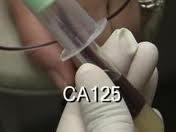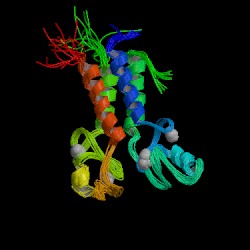Recently, the use of talcum powder has become a controversial issue as growing evidence suggests that its use may be related to an increased risk of ovarian cancer. Talcum powder, also known as talc, is a mineral composed of the elements magnesium, silicon, and oxygen. As a common household product, talcum powder can be used as an antiperspirant or in the application of cosmetics. Because of its ability to absorb moisture it may be applied to sensitive areas of the body, such as the genitals, to prevent chaffing.
A new study published in the journal Epidemiology, analyzed the use of talcum powder in over 4,000 women with and without ovarian cancer. The authors found that use of talcum powder in the genital region may increase a woman’s risk for ovarian cancer by 33%, especially in instances where the powder was used daily.
More research is necessary to determine how talcum powder causes cancer. In the meantime, the American Cancer Society suggests that it may be prudent to avoid or limit use of products containing talc, if you are concerned about developing ovarian cancer.
Although the overall lifetime risk of developing ovarian cancer is low, it is one of the most deadly gynecological cancers. Therefore it is important to recognize some of the major signs and symptoms of ovarian cancer for early detection and diagnosis.
Signs and Symptoms
- Lower abdominal pain or pressure
- Weight gain or weight loss
- Abnormal periods
- Gas, nausea, or vomiting
- Trouble eating or feeling “full” after eating
While these symptoms may be associated with other benign conditions, it is always important to discuss any questions or concerns you may have with your doctor.
Sources:
Cramer et al., Epidemiology. 2016;27: 334–346.1
American Cancer Society
National Library of Medicine
1Two authors of the study have received compensation related to ongoing litigation regarding ovarian cancer.

 A long awaited assessment of potential biomarkers for detecting early ovarian cancer shows that elevated levels of the CA-125 protein still remains the best predictor of disease progression. The CA-125 test has been around for several decades and can help determine the effectiveness of cancer treatments in patient with ovarian cancer, but it is not very useful as a screening tool. A report released in March in Cancer Prevention Research indicated none of the 28 potential serum markers tested in the study outperformed the CA-125.
A long awaited assessment of potential biomarkers for detecting early ovarian cancer shows that elevated levels of the CA-125 protein still remains the best predictor of disease progression. The CA-125 test has been around for several decades and can help determine the effectiveness of cancer treatments in patient with ovarian cancer, but it is not very useful as a screening tool. A report released in March in Cancer Prevention Research indicated none of the 28 potential serum markers tested in the study outperformed the CA-125. A new study underscores the importance for women with a family history of breast or ovarian cancer to get genetic counseling and testing for the BRCA1 and BRCA2 genes that make them more likely to develop lethal breast or ovarian cancer, says a Northwestern Medicine oncologist. The study, which was published in the Sept. 1 issue of the Journal of the American Medical Association (JAMA), shows women with the gene live longer and nearly eliminate their risk of cancer by having prophylactic surgeries to remove their ovaries and fallopian tubes (salpingo-oophorectomy) or their breasts in a mastectomy.
A new study underscores the importance for women with a family history of breast or ovarian cancer to get genetic counseling and testing for the BRCA1 and BRCA2 genes that make them more likely to develop lethal breast or ovarian cancer, says a Northwestern Medicine oncologist. The study, which was published in the Sept. 1 issue of the Journal of the American Medical Association (JAMA), shows women with the gene live longer and nearly eliminate their risk of cancer by having prophylactic surgeries to remove their ovaries and fallopian tubes (salpingo-oophorectomy) or their breasts in a mastectomy.